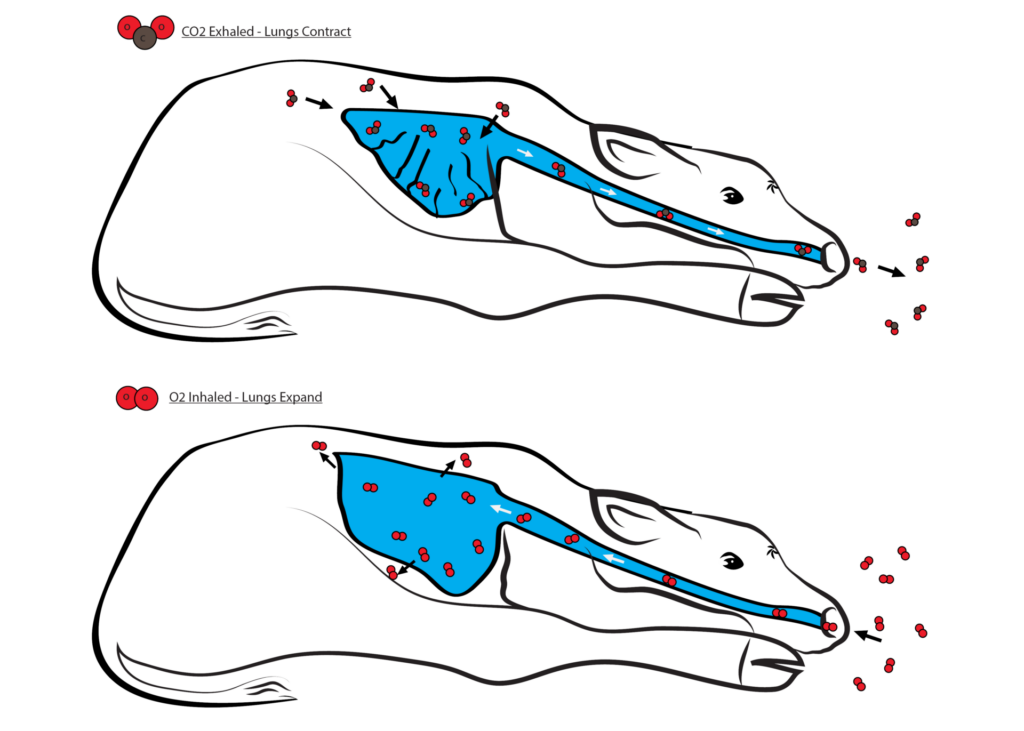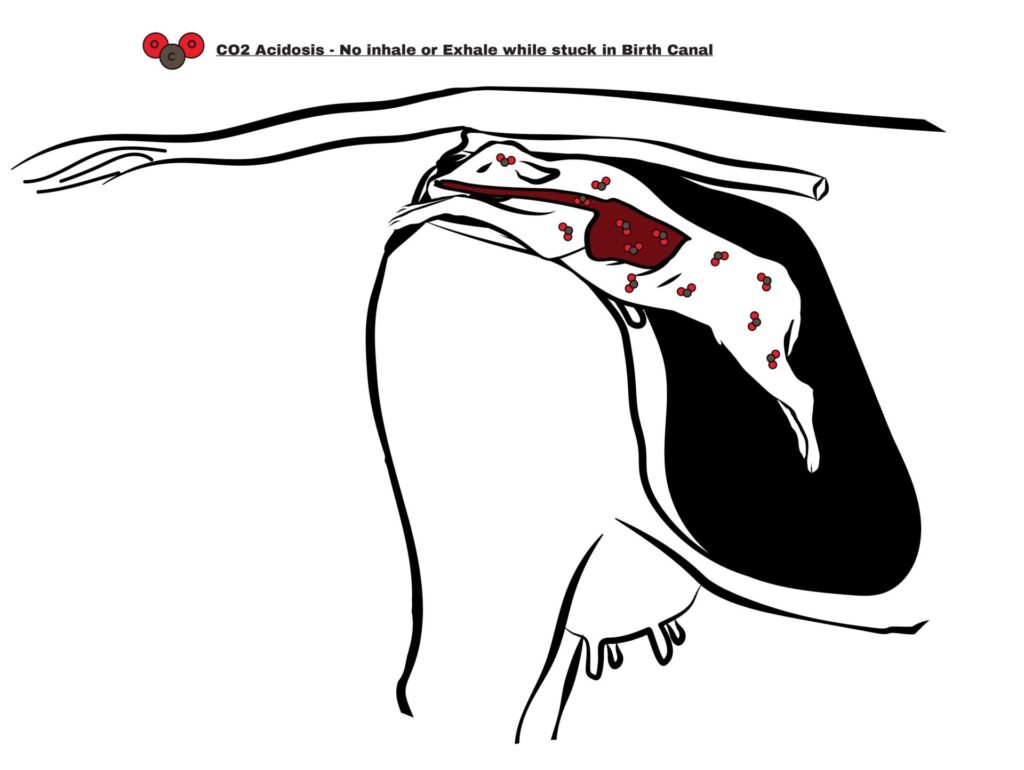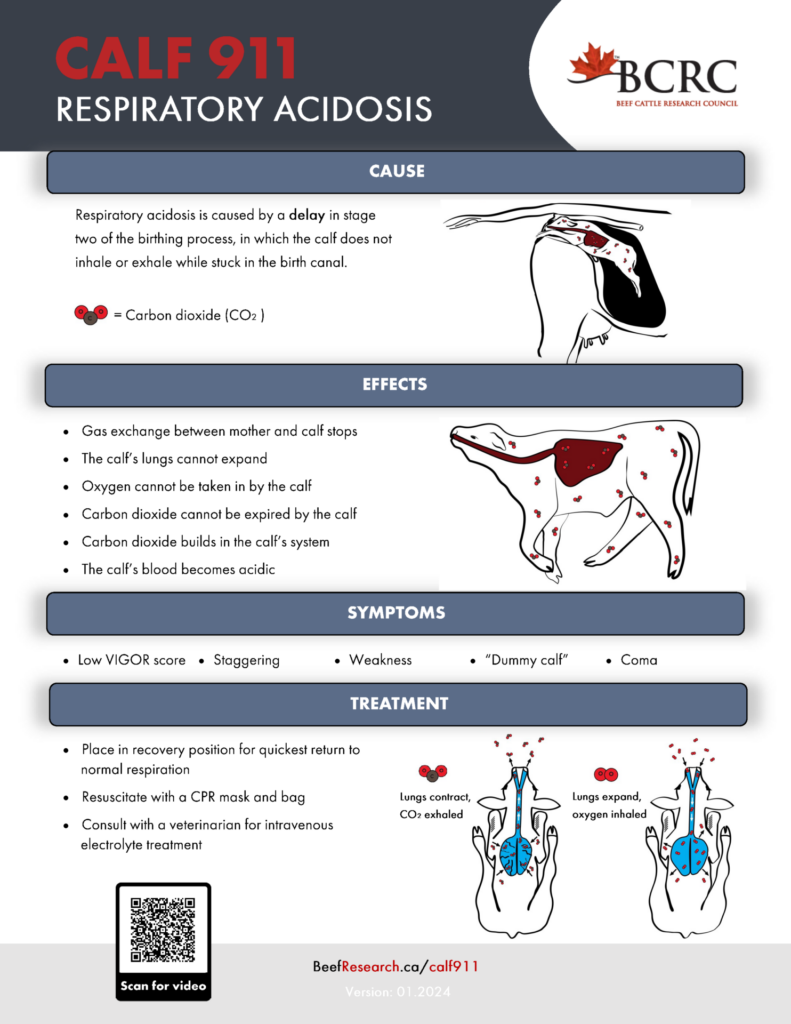Calf 911 – How to Spot Respiratory Acidosis in a Newborn Calf ▶️
Don’t Call Me Dummy
Most beef producers know the frustration that accompanies dealing with the dreaded “dummy calf”. These calves will not suckle, won’t sit up or stand and stare blankly with what seems to be a lack of will and intelligence to survive despite your best efforts. This lack of coordinated movement is often due to respiratory acidosis.
In the following video, Dr. Gabriel Jantzi of Metzger Veterinary Services explains the mechanisms that are involved in causing this type of acidosis, how to prevent it and steps to take when it does occur.
What Causes Respiratory Acidosis?
The normal respiration process
When a calf is in utero, the placenta is attached to both the mother and the calf. This link allows the mother to pass oxygen to the fetus and take away carbon dioxide, which is the waste product of breathing. Once the second stage of labor is initiated, the calf begins its journey to the outside world. During this period, the calf’s respiration is neither supported by the dam, nor able to breathe on its own. At this point, the calf is still processing the oxygen it had in its system, creating carbon dioxide, but it lacks a way of expelling it from its body. This carbon dioxide builds up in the blood, making it acidic.
When the birthing process proceeds as it should, this momentary respiratory acidosis can act as a trigger to cause the calf to gasp for air after delivery. This initiation of breathing allows for the built-up carbon dioxide to be exhaled, and the body can correct the acidosis via normal respiration.

complications in newborn calves
The problem occurs when the normal birthing process gets delayed. In this instance the calf is in a prolonged stage of being unable to clear the carbon dioxide from its body. This continues to create a state of acidosis, and the result is a “dummy calf”.

What are the symptoms of respiratory acidosis?

A calf known to have experienced delayed calving and that scores low on the calf VIGOR scoring system, is likely to suffer from respiratory acidosis. Symptoms of an acidotic calf can include:
- Low VIGOR score
- Poor suckle reflex
- “Dummy calf” appearance or stupor
- Weakness
- Lack of coordination and or staggering
- Coma
How do you treat respiratory acidosis?
The best treatment for respiratory acidosis is prevention. Good management practices help prevent calving difficulties and are key to minimizing the number of calves born with this challenging condition.

When calving difficulties do arise, early intervention is critical to ensure the calf initiates normal breathing as soon as possible. Proper resuscitation techniques are enough to prompt spontaneous respiration in those calves that are capable. However, for calves requiring more help, the use of a respiration aid such as an ambubag or mask respirator is necessary.
Once acidosis is established in the blood stream, electrolytes are needed to help correct blood pH levels. However, oral electrolytes provided using a stomach tube are not able to work quickly enough. A veterinarian will need to be contacted for advice on administering intravenous electrolytes as soon as possible.
Click here to subscribe to the BCRC Blog and receive email notifications when new content is posted.
The sharing or reprinting of BCRC Blog articles is welcome and encouraged. Please provide acknowledgement to the Beef Cattle Research Council, list the website address, www.BeefResearch.ca, and let us know you chose to share the article by emailing us at info@beefresearch.ca.
We welcome your questions, comments and suggestions. Contact us directly or generate public discussion by posting your thoughts below.
